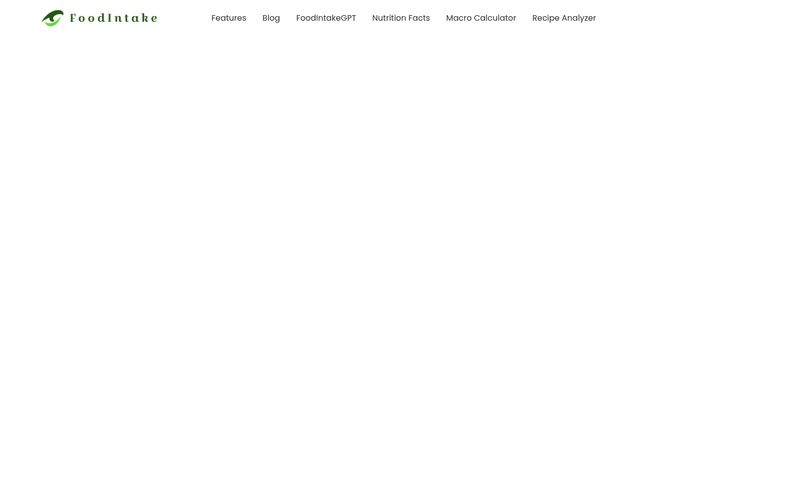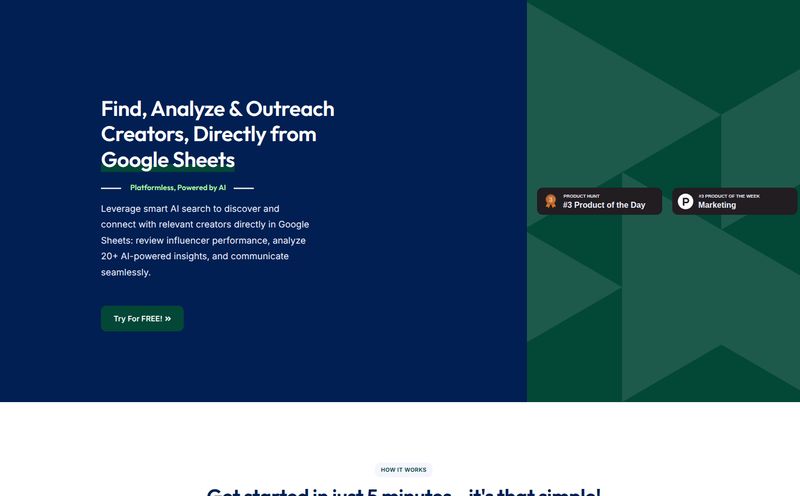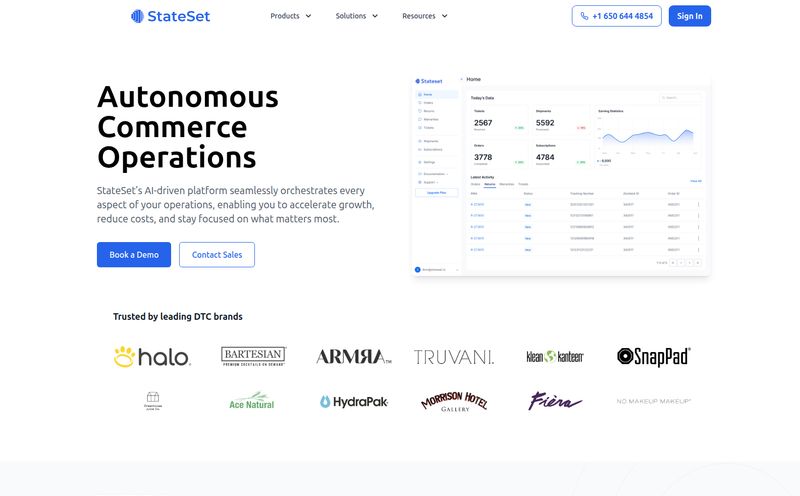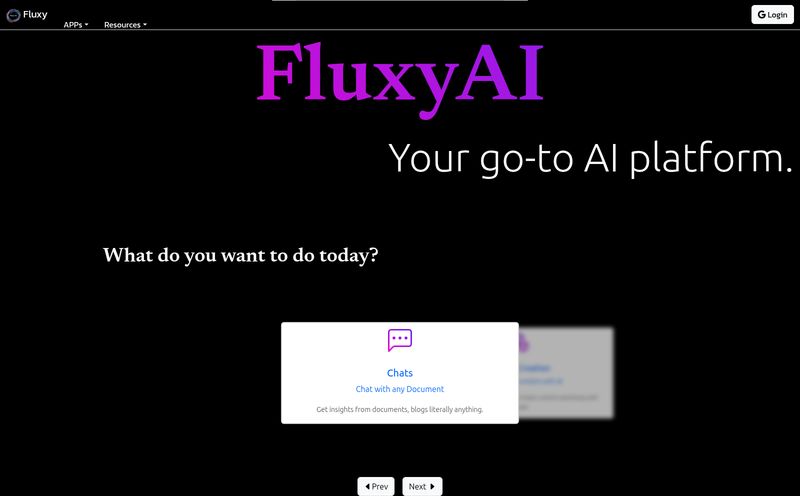Take a quick look at your browser tabs right now. I’ll wait. If you’re anything like me, you’ve got a Google Doc for the project plan, a Google Sheet for the budget, Asana for the tasks, Slack for the conversation about the tasks, and maybe a random Miro board for that one brainstorming session three weeks ago. It's organized chaos. It's a digital Frankenstein's monster held together with hope and copy-paste.
For years, we in the digital marketing and SEO world have been chasing the dragon of the “single source of truth.” We’ve been promised a tool that can do it all, a platform to unite them all. Most of the time, it’s just hype. So when I first heard about Coda, which calls itself an “all-in-one doc,” my professional skepticism kicked in. Hard. Another one? Really?
But I’ve been playing around with it for a while now, and I have to admit… this one feels different. It’s not just a doc. It’s not just a spreadsheet. It’s something else entirely, and it might just be the thing that declutters my digital life. Or yours.
What Exactly Is Coda, Anyway?
Trying to explain Coda is a bit like trying to describe the internet to someone from the 1950s. On the surface, it looks familiar. It opens to a blinking cursor on a blank page, just like a Word or Google Doc. But that’s where the similarities end. The best way I can put it is this: Coda is what would happen if a Google Doc and a Lego set had a very, very smart baby.
You start with the familiarity of a document, but you can embed powerful, interconnected building blocks right into the page. Tables that are actually databases. Buttons that trigger actions. Charts that update in real-time. It’s a doc that can do stuff. It’s a surface where you can build your own custom tools without writing a single line of code. From a simple team wiki to a complex project tracker or even a lightweight CRM, it all lives in one place. Wild, right?
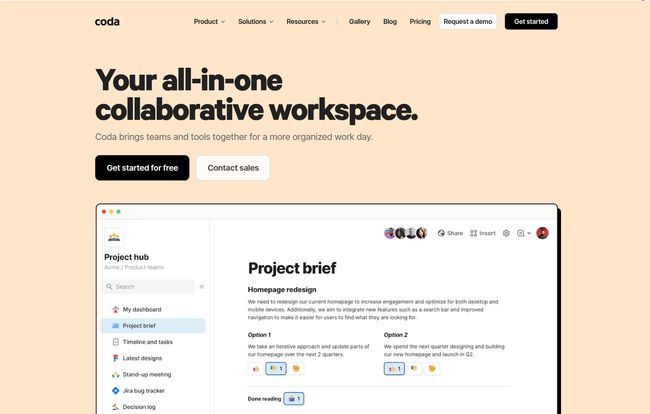
Visit Coda
The Features That Actually Matter
Any platform can throw a list of features on a pricing page. But what actually makes a difference in your day-to-day grind? After kicking the tires on Coda, a few things really stood out to me as game-changers, not just gimmicks.
A Single Source of Truth That Isn't a Lie
We’ve all seen it. The “master” spreadsheet that’s hopelessly out of date because Sarah from Sales forgot to update her numbers. Coda tackles this with something they call “Packs.” These are essentially integrations that pipe in live data from the other tools you’re already using—think Jira, Google Calendar, Salesforce, Slack, you name it. There are over 600 of them.
This means your Coda doc is never static. You can have a project brief that includes a table of tasks pulled directly from your team’s Asana project, and when a task is checked off in Asana, it updates in your Coda doc. Automatically. It turns your documents from a snapshot in time into a living, breathing dashboard. That’s a pretty big deal.
Meet Coda AI Your New, Over-Caffeinated Assistant
Yes, yes, I know. Everyone has AI now. It's the new gluten-free. But Coda's implementation feels less like a novelty and more like a genuinely useful workhorse. It lives right there in your doc with you.
Staring at a blank page for a new blog post? Ask Coda AI to whip up an outline. Got a messy page of meeting notes? Highlight it and ask the AI to summarize the action items into a neat table. You can even have it write formulas for you or find insights in your data. It’s not going to do your job for you, but it’s an incredible accelerator for getting the grunt work done so you can focus on the bigger picture. I've found it surprisingly good at generating first drafts and organizing chaotic thoughts.
Building Blocks, Not Rigid Templates
Many tools force you into their way of thinking. Coda does the opposite. It gives you the components—tables, buttons, formulas, conditional formatting—and lets you build your own solution. You can start with one of their many templates for things like project roadmaps or team OKRs, but you're never locked in. You can tear it apart, customize it, and mold it into the exact workflow your team needs. This flexibility is its superpower. It adapts to you, not the other way around.
Let's Talk About the Money The Coda Pricing Model
Alright, this is where Coda gets really interesting and, frankly, a little confusing at first. They don’t use the standard per-user, per-month model that every other SaaS company on the planet uses. They use a model called “Maker Billing.”
So, what’s a Maker? A Maker is anyone who creates or edits Coda docs. People who only need to view content or leave comments are often free (depending on the plan). Think about that for a second. In my 50-person agency, maybe only 10 of us are actively building project plans and dashboards. The other 40 just need to see them, check progress, and leave feedback. With a tool like Asana or Monday.com, I’m paying for all 50 seats. With Coda, I might only pay for the 10 “Makers.”
This is a genuinely disruptive pricing strategy that can lead to massive cost savings for larger teams. Here’s a quick breakdown:
| Plan | Price | Who It's For |
|---|---|---|
| Free | $0 | Individuals or small teams just getting their feet wet. It's surprisingly generous. |
| Pro | $10 /maker/month | Small businesses and teams who need more advanced features and integrations. |
| Team | $30 /maker/month | Larger teams needing collaboration tools, workflow automations, and more robust security. |
| Enterprise | Custom | Large organizations that need enterprise-grade security, support, and controls. |
The free plan is more than enough to figure out if Coda is right for you. I always appreciate a company that lets you properly test-drive the car before asking you to buy it.
Coda vs The World
You’re probably thinking, “This sounds a lot like [insert tool here].” And you're not wrong. It competes in a crowded space, so let's draw some lines in the sand.
- Coda vs. Notion: This is the big one. Notion is an incredible tool for building beautiful, interconnected wikis and knowledge bases. It's more focused on the aesthetic of documentation. Coda feels more like an application builder. Its tables are more powerful (more like real databases), and its formula language is more robust. I'd say Notion is for organizing knowledge, Coda is for organizing work.
- Coda vs. Airtable: Airtable is a database that pretends to be a spreadsheet. It's incredibly powerful for managing structured data. Coda starts with the freeform nature of a document and lets you embed that database power inside it. If your work is data-centric, Airtable might be the better fit. If your work revolves around documents that contain data, Coda has the edge.
- Coda vs. Google Docs & Sheets: This isn't even a fair fight. Google's suite is a static snapshot. Coda is a dynamic, interactive workspace. It's what I wish Google Docs could have become.
The Not-So-Shiny Parts A Few Caveats
Look, no tool is perfect. And for the sake of a balanced Coda review, let’s talk about the downsides. First, there's a learning curve. Because it's so flexible, it's not as immediately intuitive as opening a blank document. You have to be willing to tinker a bit to unlock its real power. It's a tool for builders.
Second, the Maker pricing, while great for saving money, can be tricky to manage. You need to be clear about who has editing permissions, or your bill could creep up unexpectedly. Finally, it’s a cloud-based tool through and through. If you need robust offline access, Coda isn't going to be your friend. No internet, no Coda. For some, that's a non-starter.
My Final Verdict Is Coda Worth It?
After years of wrestling with a sprawling tech stack, I'm genuinely excited by what Coda represents. It’s not just another productivity app; it’s a platform for creating your own productivity apps. It successfully bridges the gap between simple documents and complex, specialized software.
So, is it worth it? If you're part of a team that feels like you're drowning in tabs, constantly context-switching, and trying to make a dozen different tools talk to each other, then absolutely. Give the free plan a shot. It's especially powerful for product managers, marketing teams, and small agencies who need custom workflows without the budget for custom development.
It might not be for the solo user who just needs to write a memo, or the massive corporation with deeply entrenched legacy systems. But for the rest of us in the messy middle? Coda might just be the Swiss Army knife we've been looking for.
Frequently Asked Questions about Coda
- What is Coda best used for?
- Coda excels at creating centralized hubs for teams. Think project trackers, team wikis, meeting notes, content calendars, and lightweight custom apps. It's best for organizing complex work that involves both text and structured data.
- Is Coda better than Notion?
- It depends on your needs. Notion is often considered better for personal knowledge management and creating beautiful, public-facing documentation. Coda is generally seen as more powerful for building internal tools, managing data-heavy projects, and creating interactive workflows.
- How much does Coda cost?
- Coda has a Free plan, a Pro plan at $10/month per Maker, and a Team plan at $30/month per Maker. The key is that you only pay for “Makers” (creators/editors), not viewers or commenters, which can make it very cost-effective.
- Can I use Coda for free?
- Yes! Coda has a very capable free tier that is perfect for individuals and small teams to get started. It has some limitations on document size and automations, but it's more than enough to build useful things and evaluate the platform.
- Does Coda have an AI feature?
- Yes, Coda AI is integrated throughout the platform. It can help you write and summarize content, brainstorm ideas, generate tables from text, and assist with creating formulas, acting as a built-in assistant.
- Is Coda hard to learn?
- It's easier than learning to code, but it has a steeper learning curve than a simple tool like Google Docs. Because of its power and flexibility, expect to spend a little time experimenting with its features to get the most out of it.
